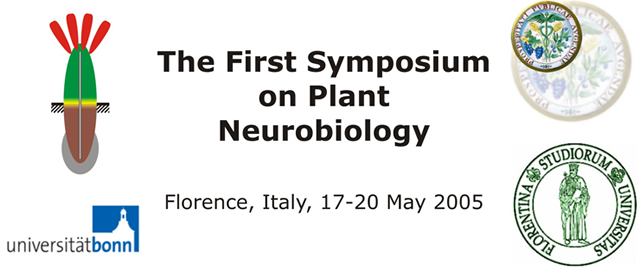
 |
| Memory effects in the response of plants to environmental signals |
| Michel Thellier*, Marie-Claire Verdus, Vic Norris and Camille Ripoll |
| Laboratoire AMMIS, FRE CNRS 2829, Faculté des Sciences de l’Université de Rouen, F76821 Mont-Saint-Aignan Cedex, France |
| *email: Michel.Thellier@univ-rouen.fr |
|
Plants are sensitive to stimuli from the environment (e.g. wind,
rain, contact, pricking, wounding). They usually respond to such stimuli by metabolic or morphogenetic
changes. These changes may occur in tissues at a distance from the stimulated region, which implies that the
stimulus must be transmitted in some form from the stimulated region to the region where it takes effect (i.e.
the stimulus and the response then are spatially separate). Sometimes the information corresponding to a
stimulus may be “stored” in the plant where it remains inactive until a second stimulus
“recalls” this information and finally allows it to take effect (i.e. the stimulus and the
response then are temporally separate). Two experimental systems have proved especially useful in unravelling
the main features of these memory-like processes. In the system based on Bidens seedlings, an asymmetrical treatment (pricking, or gently rubbing one of the seedling cotyledons) causes the cotyledonary buds to grow asymmetrically after release of apical dominance by decapitation of the seedlings. This information may be stored within the seedlings, without taking effect, for at least two weeks; then the information may be recalled by subjecting the seedlings to a second, appropriate, treatment that permits transduction of the signal into the final response (differential growth of the buds). Whilst storage is an irreversible, all-or-nothing process, recall is sensitive to a number of factors, including the intensity of these factors, and can readily be enabled or disabled. In consequence, it is possible to recall the stored message several times successively. In the system based on flax seedlings, a mechanical stimulus (e.g. wind, touching) has no apparent effect. If, however, the plant is subjected at the same time to a 2-day calcium deprivation, numerous meristems form in the stem. When the calcium deprivation treatment is applied a few days after the mechanical treatment, t he time taken for the meristems to appear is increased by a number of days exactly equal to that between the application of the mechanical treatment and the beginning of the calcium deprivation treatment. This means that the information corresponding to the mechanical treatment has been stored in the plants, without any apparent effect, until the calcium deprivation treatment recalls this information to allow it to take effect. The response of flax seedlings to cold shock, to radiation from a GSM telephone and to low intensity electromagnetic radiation at 105 GHz is the same as to mechanical treatment, namely storage of the information and recall after calcium deprivation. The calcium status of the plants before, during and after the calcium deprivation treatment has been studied by SIMS (secondary ion mass spectrometry). Gel electrophoresis has shown that a few protein spots are shifted (compared to controls) in flax seedlings that have stored information corresponding to a cold shock signal but that are not in a state to recall it; a SIMS investigation has revealed that the shift of one of these spots is probably due to protein phosphorylation. Similar modifications of the proteome have been observed in Arabidopsis seedlings subjected to the same stimuli. We suggest that storage/recall processes in plants constitute an elementary form of « memory » and that, given their simplicity relative to the animal brain, these plant processes may be used as experimental systems for testing hypotheses about memory storage and evocation. |
| [Back] |
Last Update on 06-06-05 by Andrej |
|